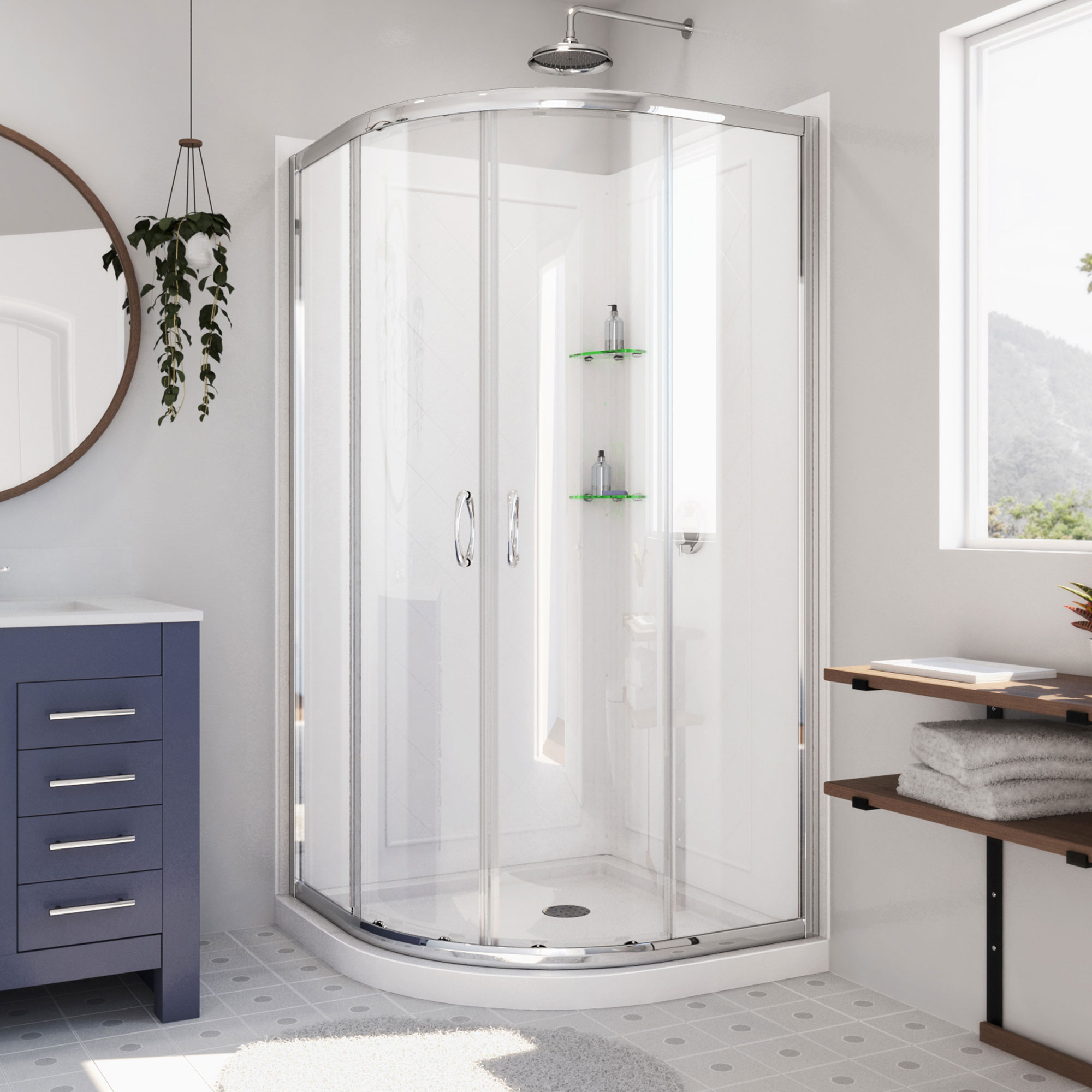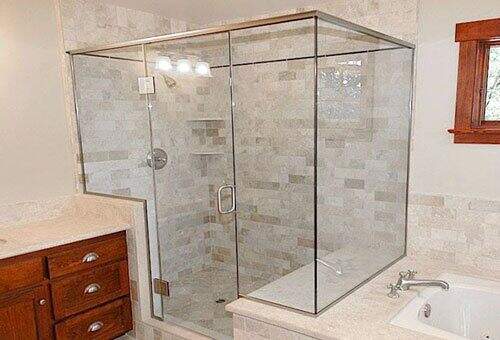Comprehensive Tutorial for Installing a New Shower Unit
Comprehensive Tutorial for Installing a New Shower Unit
Blog Article
We've stumbled on this post on How to Install a Freestand listed below on the internet and felt it made good sense to write about it with you over here.

A successful shower installation requires careful preparation and also a great deal of work. In many cases, you will certainly require to do 3 sorts of jobs: framing walls, installing the plumbing, as well as ending up wall surfaces.
Prep work
Firstly, you should decide on the sort of shower that you want to install. It is important to establish whether the picked shower can coping with particular systems and also can regulate a secure level of water via the central heating boiler. Most shower devices nowadays are developed to be versatile to different water pressures (such as saved hot water and also cool keys).
It is also essential to take into consideration the water stress and also the planning of the piping and also drainage for the shower
Various Kinds Of Shower Units
Technique
Depending on the kind of shower you desire to mount, the shower head need to either be fitted in order to avoid its contact with the water in the bathroom below or the base tray, or it must have a check shutoff.
Before starting, it is a good idea to mark the placements of the shower head as well as control, as well as to intend the pipe-work entailed. In addition, the water drainage system to eliminate the drainage will require to be intended. Both positions of the cord route and also the shower button will additionally require to be taken into consideration if an immediate or electric shower device is being installed.
Make use of the instruction guide provided with the shower unit to fit the shower control.Before fitting the pipes that will supply the water to the shower system, it is necessary to remove the supply of water. In order to safeguard the pipes, they must be provided a waterproof covering as well as likewise fitted with isolating shutoffs. The pipes can after that be buried into the wall surface as well as glued over to neaten the total look.
Fit the base tray, shower head, as well as fittings.
Connect the primary shower control to the pipelines that will be supplying the water (This might call for a female screw thread adapter).
Reconnect the water supply and also test the pipes for any leaks, as some may need firm.
If you are mounting an electrical shower, remember to turn off the electrical energy supply before making any electrical links. As soon as these links have been made (there must be guidance within the instruction manual), the power supply can be switched back on.
Adjusting Water Pressure to Suit Your Shower
The cold water reservoir can be raised to a better elevation (in some cases as low as 150mm (6inches)) by fitting a solid wooden assistance under it - potentially made up of struts and also blockboards. If you choose this choice, the main and distribution pipelines will certainly also have to be elevated to meet the brand-new elevation of the reservoir.
Conversely, a booster pump (a single pump or a dual/twin pump) can be fitted. Whichever type is picked, it should be linked into the power supply in order to operate.
Piping and also Water drainage
It is best to make use of 15mm diameter supply pipes, and make the runs to the shower as brief and also straight as feasible so regarding maintain maximum pressure and reduce warm loss. Furthermore, by reducing using joints for pipe edges, you can reduce the resistance in the circulation of the water. You can accomplish this by bending the pipelines instead.
Most Common Errors
How Do You Install a Shower? Follow This Guide
Installing a Shower at a Glance
Tools & Materials: Level, electric drill, caulk, hole saw, cedar shims, shower unit Step 1: Drill pilot holes Step 2: Prep fixture holes Step 3: Move unit into place Step 4: Caulk corners and base Step 5: Attach door Step 6: Install shower pan Whenever plumbing is involved in a DIY project, people worry about what might go wrong. The truth is that installing a shower isn’t that complicated, and you can save a lot of money by doing it yourself. You shouldn’t need to make any alterations to your plumbing to complete the job, and most of the tools you need will be provided in your new shower kit.
Can I Install a Shower Myself?
Even if you’ve never installed a shower before, you’ll find this to be a project that is perfectly suited for DIYers with a moderate level of experience. Whether you're doing a bathtub conversion or installing a new stall, most of what you need comes in shower kits that you can purchase from a hardware store. The first thing you need to do is determine what type of shower stall you want.
Single-panel stalls are the easiest to install because they come preassembled. All you need to do is put them in place. Multi-panel showers require a few additional steps, but you’ve got more control over the appearance of your unit. Multi-panel units are also much easier to handle if you’re going to do the installation without any help.
Be sure to take all appropriate safety precautions, such as wearing eye protection and gloves. When you’re removing or installing a shower unit, you might kick up debris that could hurt your eyes. You’ll also need to work with equipment that will get extremely hot, so be sure to have safety gloves handy.
Tools and Materials
2- to 4-foot level Electric drill with a 1/8-inch drill bit Caulk 2-inch hole saw Cedar shims The unit itself Before You Begin: Prep the Space
It’s highly important to measure your space accurately before putting the stall in. Measuring from the floor upward and from each corner outward will ensure you’ve got the right measurements. What you’re looking for is where the plumbing apparatuses are going to come through the stall. Transfer these measurements over to the back of your unit by drawing the locations of these holes using a pencil or marker.
Pull out your old shower and make sure to scrape off all the old caulking. Be thorough because you want to work with smooth surfaces for the best installation. Once you’ve pulled out your existing shower, you need to make sure that the floor is clean and dry. The best way to clean debris is with a shop vacuum, as it’ll soak up water and dirt together.
If you’re experiencing any plumbing issues, such as low water pressure, this is a perfect opportunity to solve them. Make sure that the pipes themselves are not in need of patching and clean your showerhead. When you turn the water back on after your project, check the pipes for signs of wear or disrepair. Anything beyond minor repairs should be handled by a plumber, and this is the best time to bring in a professional.
If the floor has any moisture at all, don’t proceed until it’s completely dry. The last thing you need is for the floor to rot or invite mold and mildew into your base. Once everything is dry, apply waterproof wallboard to the walls. This can be attached with screws or nails, then sealed with caulk so that water doesn’t seep into any crevices.

I'm very curious about How to Install a Shower Enclosure and I'm hoping you liked the new post. Enjoyed our write-up? Please share it. Help other people locate it. Thank you so much for taking the time to read it.
Book An Estimate Now Report this page